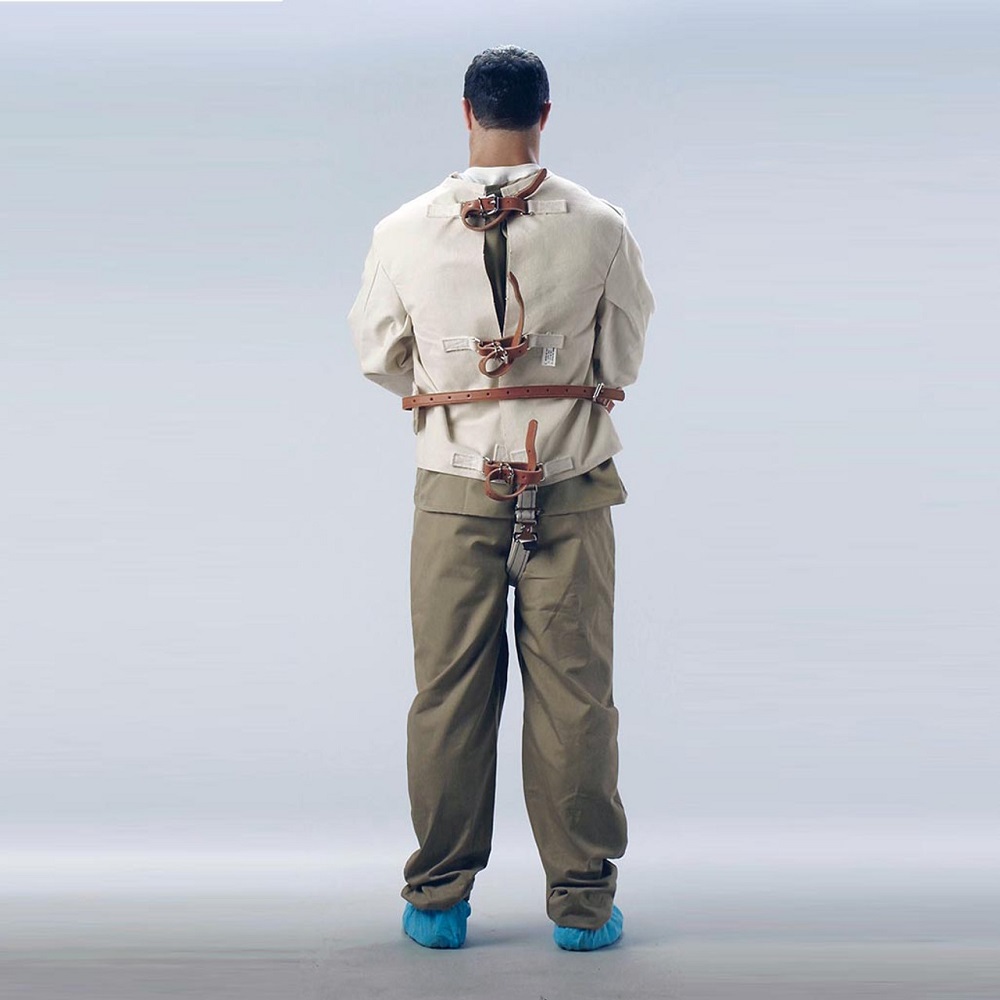The straightjacket has long been a symbol of psychiatric treatment, often evoking images of confinement and restriction. Historically, it has represented an era when mental illness was poorly understood and those afflicted were treated with fear and misunderstanding. However, the evolution of the straight jacket mirrors larger changes in psychiatric care and society’s understanding of mental health. This article explores the history, usage, and eventual decline of the straight jacket in psychiatry, shedding light on the journey from confinement to compassion.
The Origins of the Straightjacket
Historical Context
The straight jacket, or straitjacket, originated in the early 18th century during a time when society was beginning to grapple with the idea of mental illness. At this point, mental health was largely misunderstood, and individuals suffering from various conditions were often isolated from the rest of society. Early forms of mental health treatment included confinement in asylums where patients faced harsh conditions.
The design of the straightjacket was intended to restrain individuals who exhibited violent or erratic behaviors. Made from sturdy canvas or cotton, the jacket was fashioned to tie the arms closely to the body. This design was thought to prevent self-harm or injury to others, reflecting a punitive approach to treatment rather than a therapeutic one.
The Role of Asylums
During this period, asylums flourished across Europe and the United States, housing individuals diagnosed with mental disorders. While some asylums aimed to provide care, many operated with minimal oversight. Patients were subjected to neglect, abusive practices, and dehumanizing treatment. The straightjacket became a common instrument within these institutions as a method of control.
The use of the straightjacket was symptomatic of a larger societal trend—mental illness was feared and often stigmatized. People believed that those with mental disorders posed a danger to themselves and others. The perception of mental illness as a moral failing or punishment meant that the straightjacket was seen as a necessary tool for maintaining order in institutions perceived as chaotic.

Shift in Understanding Mental Health
Emergence of Modern Psychiatry
The late 19th and early 20th centuries marked a turning point in the understanding of mental health. Pioneering figures such as Sigmund Freud and Emil Kraepelin began to analyze mental disorders through a more scientific lens. This shift encouraged a move towards more humane treatment methods, emphasizing the need to understand the underlying causes of mental illnesses.
As modern psychiatry developed, so did the recognition that individuals with mental health conditions required compassionate care rather than mere restraint. This period also saw the introduction of psychotherapeutic techniques, offering new avenues for treatment that focused on understanding and addressing patients’ experiences.
Changing Perceptions of Treatment
The evolving understanding of mental health gradually led to a decline in the use of the straightjacket. Asylums and facilities began shifting from punitive measures to rehabilitation-focused approaches. Although the straightjacket continued to be used in some institutions during this transition, increasing awareness of patient rights and ethical treatment practices started to challenge its application.
During this time, significant reforms began to emerge. Advocates for mental health began to question institutions’ practices, calling for improved conditions and a more humane approach to mentally ill individuals. This advocacy would play a crucial role in how treatment evolved, shifting the focus from confinement to care.

Decline in Usage
Legislative Changes and Human Rights Movements
With the rise of human rights movements in the mid-20th century, there was a significant rejection of the use of the straightjacket in psychiatric treatment. Legislation began to be established to protect the rights of patients. Advocacy groups pushed for reform in mental health care and greater protection against abusive practices.
The emphasis shifted towards deinstitutionalization, promoting community-based treatments that would enable individuals to receive care while living independently. This movement led to the closure of many asylums and a reduction in the reliance on physical restraints, including straightjackets. As a result, mental health treatment became more focused on therapeutic methods rather than punitive measures.
The Role of Therapy and Medication
As the straightjacket became less prevalent, new methods of treatment took center stage. Psychotherapy, cognitive-behavioral therapy, and medication emerged as primary forms of intervention for mental health issues. These approaches focused on understanding the individual’s needs, experiences, and behaviors rather than restricting their movements.
Medications played a significant role in stabilizing symptoms for many individuals with mental health conditions. Antipsychotics, antidepressants, and mood stabilizers allowed for more effective management of symptoms, reducing the need for physical restraints. The dual approach of therapy combined with medical interventions revolutionized the landscape of mental health care.

Contemporary Perspectives
Restraint Practices in Modern Psychiatry
In contemporary settings, physical restraint is still used in certain circumstances, but its application is approached with caution and oversight. The straightjacket is rarely employed; instead, other forms of restraint are used in acute psychiatric settings when patients exhibit aggressive or harmful behavior. Mental health professionals are calling for the implementation of trauma-informed approaches to limit the use of restraints.
Today, the focus is on de-escalation techniques, which prioritize communication and conflict resolution. Training professionals in recognizing triggers, managing crises, and handling distressing behaviors is essential in providing safe environments for patients. The shift towards understanding the underlying issues has made restraint less necessary.
Ethical Considerations
The ethical considerations surrounding the use of restraints in mental health settings have drastically changed. Today, the emphasis is on ensuring dignity, respect, and humanity for individuals receiving care. Studies show that understanding patients’ histories and trauma can lead to better outcomes without resorting to restraint.
Advancing research continues to inform best practices in mental health treatment while prioritizing patient autonomy and choice. Moreover, the emphasis on informed consent reflects a significant departure from the past practices associated with the use of the straightjacket.

The Cultural Symbolism of the Straightjacket
Media Representation
The straightjacket remains a powerful symbol in popular culture, often serving as a representation of madness and mystique. Movies, television shows, and literature have utilized the straightjacket as a powerful visual shorthand for extreme mental illness or confinement. This representation can perpetuate stigma surrounding mental health, reinforcing negative stereotypes about those who experience mental disorders.
Conversely, the portrayal of characters in straightjackets can evoke empathy and raise awareness regarding mental health issues. Such representations can spark conversations about mental health care, helping to normalize discussions around seeking help and treatment. Understanding the impact of these portrayals is crucial to reshaping how society views mental health.
Dismantling Stigma
Addressing the cultural symbolism of the straight jacket involves dismantling stigma surrounding mental illness. Public conversations about mental health have increased, leading to greater understanding and acceptance. Advocacy groups actively work to challenge misconceptions, promote education, and encourage open dialogue about mental health struggles.
By promoting compassion and understanding, society can work toward a future where individuals are treated with kindness and dignity, breaking free from the confines of misunderstandings inherent in representations like the straightjacket.

The Future of Mental Health Treatment
Innovation and Progress
The future of mental health treatment is promising, with innovations aimed at improving patient care and safety. Advances in telehealth, for example, have made mental health services more accessible. Individuals can seek professional help from the comfort of their homes, reducing barriers to treatment and increasing the likelihood of receiving support.
Additionally, new therapeutic approaches, such as mindfulness and trauma-informed care, are emerging as effective interventions. These methods prioritize holistic healing and address the root causes of mental health struggles. As a result, individuals may experience less need for restrictive measures, such as restraints.
Community-Centered Care
The shift towards community-centered mental health care is another critical development. Providing individuals with resources within their communities promotes recovery and decreases reliance on institutional settings. Integrating mental health services into community health initiatives allows for abundant support, fostering resilience, connection, and healing.
As the understanding of mental health continues to evolve, the focus remains on empowering individuals and reducing the stigma associated with mental illness. A community-centric approach ensures that people receive comprehensive support instead of being isolated and misunderstood.
Embracing Compassion and Dignity
Honoring the Journey
The evolution of the straight jacket in psychiatry reflects broader societal changes regarding mental health. While it once symbolized fear and control, its history is intertwined with a growing understanding of compassion and dignity. The lessons learned from this journey can guide future mental health practices toward a more humane and supportive framework.
Embracing compassion and understanding for those experiencing mental illness is vital. This approach encourages greater empathy, breaking down barriers and facilitating recovery more effectively. By honoring the experiences of individuals, society can foster a more supportive environment for those navigating mental health challenges.
A Hopeful Future
In conclusion, the evolution of the straight jacket in psychiatry provides insight into the broader changes in mental health care over the years. From its origins as a tool of restraint to its decline in favor of compassionate care, the journey toward understanding mental illness is ongoing.
As we look toward the future, continuing to prioritize the dignity, autonomy, and well-being of individuals struggling with mental health issues is crucial. By fostering open conversations, embracing innovative practices, and learning from the past, we pave the way for a brighter and more compassionate future in mental health care.


